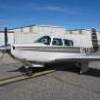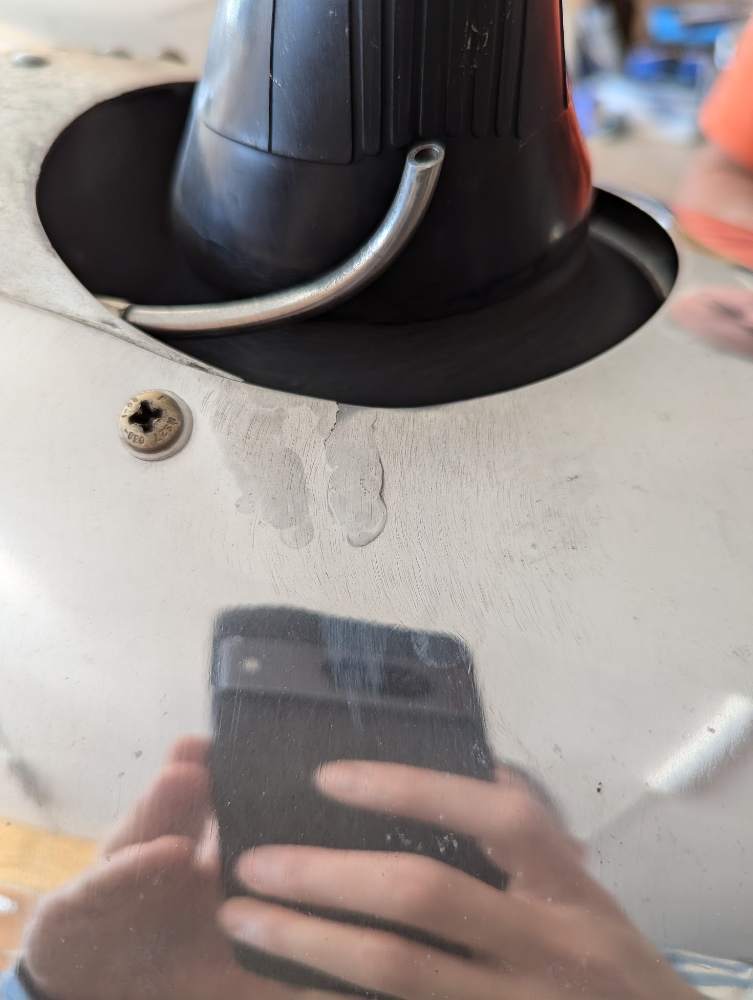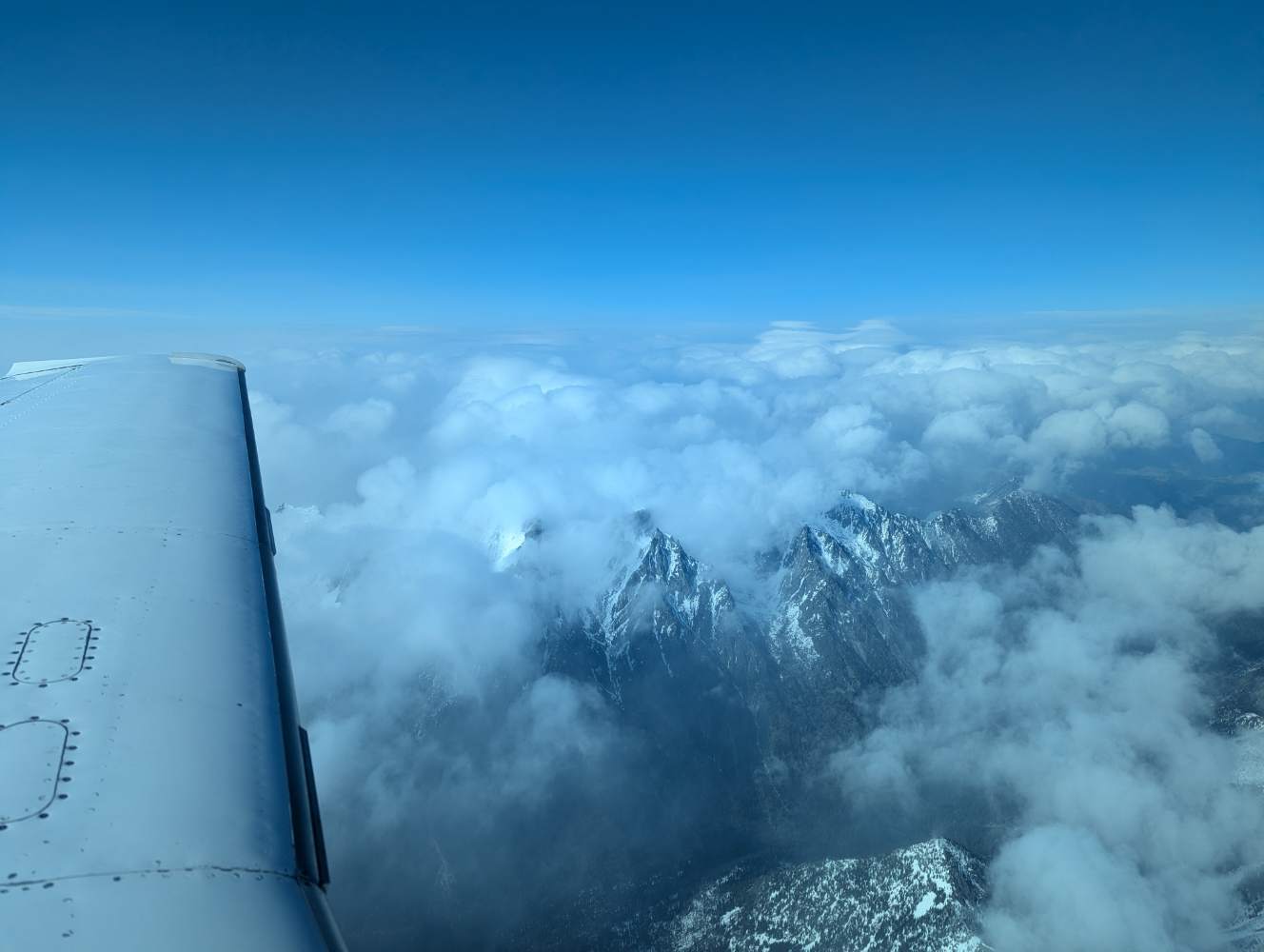-
Posts
795 -
Joined
-
Last visited
-
Days Won
4
Content Type
Profiles
Forums
Blogs
Gallery
Downloads
Media Demo
Events
Everything posted by wombat
-
I took my M20E up to > 17,000 several times. Never got it to FL180 though. Here is a picture of it at 17,000 on my way to Missoula.
-
There are enough accidents related to doors opening in flight that result in strongly negative outcomes I wonder if we would be better off experiencing an open door in a more controlled environment so we can manage this situation better when it happens unexpectedly. Since I have a > 10,000' runway available I'm confident that I could land safely even if I can't maintain controlled flight below 120 KTIS. With speed brakes & landing gear I can slow from 120 knots to 0 in less than 2 miles. So maybe I should go fly with someone and open the door in flight and practice closing it both with and without their assistance. I've done it dozens of times on my 182 and on various other single engine Cessnas. What does everyone think? Is this just a stupid idea that is going to get people killed or is it a great idea that will save lives?
-
Well, I tried triflow on the coiled wire jacket, and on all of the moving parts I could get access to with the cowl off. The next time I went flying something different happened and the cockpit knob closed extremely easily. I left it in that position and on landing the cowl flaps were still open. So there is something very wrong. I think the hinge is overcenter now. And the hinge pins were extremely worn and loose.
-
I figured, why not both? I've ordered a replacement (used) spinner to be delivered on Wednesday, and will send in my cracked one to be welded.
-
Yup, that's what it looks like to me too. While it kind of looks like finger smudges, those are actually just color differences in the metal. The crack is on the left edge of the weld, the right edge is raised a little and has a small lip there. The right hand discolored area is raised above the surrounding metal but the left hand one isn't.
-
Just discovered the spinner is cracked on my M20K Rocket. Will contact www.spinner-repairs.com on Monday morning and have sent a message to @Alan Fox to see if he has any serviceable used ones for sale. Does anyone have ideas for other options for me? I will look up the part number and call around to the usual suspects for used parts. I'm assuming the plane is not safe to fly at this point, which is disappointing because I had a good trip planned for next weekend. If I can't get a replacement shipped overnight or two day I'm probably going to have to delay for a week or two.
-

Ovation with Monroy Tanks - Wing Gauges reading
wombat replied to shorrick mk2's topic in Modern Mooney Discussion
If you can calibrate multiple points on the JPI 900 fuel level, they can be accurate at most fuel levels. If you have the long range tanks they last 'few' gallons cannot be measured since the top of the long range tanks are higher than the top of factory tanks and the fuel level sensors are only in the factory tanks. -

Ovation with Monroy Tanks - Wing Gauges reading
wombat replied to shorrick mk2's topic in Modern Mooney Discussion
Empty one of your tanks completely by running it until the engine stops while the aircraft is at a normal cruise attitude. This could be done in the air or on the ground. Then start adding fuel in known quantities and record the gauge measurements at each increment. After the first 20 gallons or so, be sure to give the fuel enough time to move between tanks every time you add fuel. Here are the results of when I did this on my plane: https://docs.google.com/spreadsheets/d/1eCCiLBGDNsSlQaziJ_DnWsNmMHbi8wbwifmRALW9uVo/edit?usp=sharing -
Got the plane back yesterday. I've done two flights since then and experienced no abnormal readings. He also replaced the connections to the EGT and CHT for cylinder #2, which had been acting up as well and those temps went back to normal too.
-
https://www.bst-tsb.gc.ca/eng/rapports-reports/aviation/2021/A21P0001/A21P0001.html is the Air Transport Canada report on this incident. https://www.beechtalk.com/forums/viewtopic.php?f=21&t=198092 is the beechtalk thread about it. There is no mention that there was actually a dual failure. There was a single failure, and the second one was configured in a way that it could not be reverted to provide attitude or turn information. @RobertGary1 Based on 49 CFR 830.5 your incident required an immediate report to the NTSB: https://www.law.cornell.edu/cfr/text/49/830.5 (9) A complete loss of information, excluding flickering, from more than 50 percent of an aircraft's cockpit displays known as: (i) Electronic Flight Instrument System (EFIS) displays; (ii) Engine Indication and Crew Alerting System (EICAS) displays; (iii) Electronic Centralized Aircraft Monitor (ECAM) displays; or (iv) Other displays of this type, which generally include a primary flight display (PFD), primary navigation display (PND), and other integrated displays;
-
Local A&P found that one of the wires for the oil pressure transducer was loose. He replaced the connectors on all four wires with solder-filled connectors and heat shrink on top. Not pictured, but the wires will get re-bundled back into a collection so they are not dangling out in the open. The airport is closed today and tomorrow, so I'll drive down there Thursday morning and see how things look.
-
Did the oil change. Oil looks normal. Replaced the oil filter and cut open the old one, it looks normal. I pried many of the folds of the filter apart and there was no metal in them. A few specs of carbon, but not much. I'll consider replacing the transducer if just the wiring didn't fix the problem. It's a PT-100GA model: https://www.aircraftspruce.com/catalog/inpages/pt100ga.php
-
In cruise yesterday, my oil pressure indication started showing dangerously high pressures. The indications were intermittent and there were no other indications of anything wrong with the engine. This was the third flight of the day. I chose to land somewhere closer that has a mechanic on the field rather than continuing the flight. We discussed it and I changed the oil and cut open the old oil filter. Everything looks normal. There is no excess oil visible anywhere and there is no visible damage anywhere. The plane is currently still there and I borrowed a car and drove home. After talking with quite a few people, including the local A&P, my favorite MSC's chief mechanic, and the engine monitor manufacturer (Electronics International from Bend, OR) we think the problem is the old wiring connectors on the oil pressure transducer. The A&P is going to take that bit of wiring out and replace the splices (EI is on their third generation of splice styles, and this one is the first style) and then we'll see if this 'problem' comes back. Any other thoughts on what the problem might be and if I should be doing anything else to diagnose this issue before putting my life on the line and flying it again? https://apps.savvyaviation.com/flights/shared/flight/8134230/c8927a32-1290-4cf6-ad78-46e06eef7703
-
$350k with the engine at 1,300 hours and it doesn't even have TKS? It's not really for sale, it's "My wife said I had to sell it."
-

Transition training for M20F/G in San Fran/San Jose bay area
wombat replied to Max3293F's topic in West Coast Mooney Club
The most critical piece of the airplane is the nut that connects the seat to the yoke. -
Have not had to do it yet. I suspect I will do these things on condition, if something happens. My aviation tank was installed new in late 2022, so I've got a while yet.
-
I finally went ahead and made an order for much of this stuff today. I got the CGA540 female to CGA540 female fill adapter from amazon for $100: https://www.amazon.com/gp/product/B09TCDBFP4/ref=ppx_yo_dt_b_asin_title_o01_s00?ie=UTF8&psc=1 And I got a CGA-540 Male to Scott 9/16-18 Male from MH Oxygen for $105 (Cheaper than Aircraft Spruce) And I also got a CGA-540 Male to CGA-540 Male from MH oxygen for $50 so I can refill my portable Aerox tank for the Cessna 182. We'll see how this all goes. I've got an oxygen tank for my acetylene torch, so I figure I'll just turn that one in and replace it with a new one filled with ABO that I know I can use at the hangar.
-
The Rocket cowl flaps are known to be extra difficult, the AFM supplement even has a couple of special notes saying you have to do it right when you level off or you won't be able to get them closed. I have an oil change coming up, I'll pull the cowling off then and see what I can see.
-
Yes, they are rather difficult to close on the ground too, but not what I would call 'hard' to close on the ground. Maybe 30# of pressure? It doesn't feel like they are catching on anything, just a lot of friction in the system. I wonder if I could replace that knob with a vernier, so I could use the screw action for the first part where it's really tough, and then just push in for the easier part....
-
The cowl flaps on my Rocket have gotten harder and harder to close. The last two flights, I have not been able to close them at all in flight even when I slowed down to about 90 KT at the top of my climb. It's only about 25 hours since annual; is there any lubrication I should be doing to help this? Yes, they were always tough to get closed, but at this point, it's darned near impossible. I lean over and push on the knob while I pull on the frame tube in front of the windscreen. I'd be surprised if I'm not putting 150# or more of force on it.
-
Into Seattle then back over the Cascades. All the clouds around here are dangerous for one reason or another.
-
In about 2006 I bought my mother a quite nicely restored 1972 Mercedes 350 SL. She took it back home and never got into it again. It rotted away with ethanol gas in the tank that eventually rusted out the tank, pump, and fuel lines and all the hoses are dry rotted and mice chewed up the brand new leather seats and for a while it was worth maybe $20k. Now it's probably worth $3k. @Shadrach If you are in shape, there are no permits required for day-hiking the enchantments and you can do a loop. It's pretty tough though. There are a lot of amazing hikes that can be done around here that don't require permits.... The way I see it, the permitted hikes are maybe 5% better than the non-permitted ones. So if I want to go and don't have a permit I'm not losing much. I do a lot of sweat equity tasks. In the last month I've replaced a home electric panel (Quote: $10k, my cost: $1k) and poured a footing for a new hot tub (Quote: $12k, my cost, $1,500, and that includes flying to Seattle twice to get my step-son to help and then take him back after) On-going is installing a shop heater (New: $4,500 plus $5k install and about $5k in other expenses like propane tank but my total cost will be about $900)..... I live above my means in some ways by doing this.... I can't afford all of this stuff if I just pay for it to be done. But if I do it myself, I can afford it.
-
There is a plane at my home airport that has been sitting unused and untouched since at least 2016.... Apparently sometime around 2014 someone aired up the tires and rolled it out and washed it then rolled it back.. The owner was furious, was talking guns and lawsuits if he found out who did it. But in the last 3 months there have been some people working on it. Local A&P whose shop got destroyed in a windstorm, and his GF's son, who is the nephew of the owner. The son is a PPL from across the state, his plan is that once it's flying he'll take it 'home' and have a plane that was very low cost. I talked to the A&P and he said he's probably put $25k in labor into it already, and they'll probably be that much more in labor, plus $25k in parts before it's actually legal & safe to fly. But they are doing it!!!!
-

Moved to CA from FL, great to be west again!
wombat replied to Aerospace's topic in West Coast Mooney Club
@gacoon No, he's in socal, but saying the WX feels like its Seattle. I see that you are from Auburn, WA though. That's where I did all my training, with Northwest Aviation College in 2009-2011! It's a great little airport!













